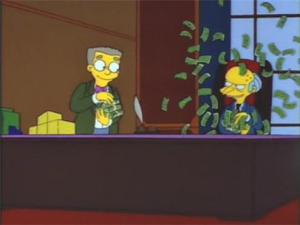Pros: good start; cinematography by Thierry Arbogast Cons: crumpled script; banal character development; The denouement and ending ruin the entire movie Cold Blood Legacy
Genre thriller, action
Directed by Frederic Petitjean
Starring: Jean Reno (Henry), Sarah Lind (Melody), David Gyasi (Malcolm), Joe Anderson (Kappa), Igor Tsiskevich (Davis), Samantha Bond (the wife of the deceased), etc.
Студии Ascot Elite Entertainment Group, Eastwest Productions, Eight 35
Year of release 2019
IMDb website
Jean Reno plays a hitman named Henry. After completing one task, he chooses to live as a hermit in the snowy mountains. In winter, only animals can be found in this area, but there are exceptions. A tourist’s snowmobile (played by Canadian actress Sarah Lind) breaks down in the forest, she receives dangerous injuries in the fall and manages to crawl to Henry’s house. A man who is used to killing saves a stranger. Although he looks after her, Henry does not trust the girl, who did not have a passport, mobile phone or credit card with her. While they are trying to get along, dozens of kilometers away, police are investigating the murder of a wealthy businessman, attempting to solve the complicated case.
“Cold Blood” became a joint project between France and Ukraine. Work on the film took place in the USA and Canada, and the most picturesque filming was organized in the Ukrainian Carpathians. In order to show the main character’s line, a wooden hut was even built in the Synevyr National Park. Scenes that did not require characteristic landscape views were filmed in Kyiv.
What’s funny is that the thriller takes place in America, so the Carpathians are presented to the audience as the snow-capped slopes of Washington state. Moreover, in one of the scenes in the psychiatric hospital you can recognize the well-known residence in Mezhyhirya.



The director of the film, as well as its screenwriter, was the Frenchman Frederic Petitjean. Petitjean had no experience in directing feature films, which had a rather sad effect on the quality of the film Cold Blood. The film lasts only an hour and a half, and every minute of the film is reminiscent of more famous (and more successful) action films. Jean Reno does not save, but only aggravates the situation, agreeing to play the main role. The actor, alas, is not as cheerful as before, and Reno’s latest reincarnation as a hired killer no longer evokes the admiration he once had.
It is also upsetting that Frederic Petitjean is very superficial in revealing the main characters. He uses old and very tired techniques to try to summarize the characters. So, the assassin reads and quotes “The Art of War” by Sun Tzu. A police officer investigating a criminal case sleeps and eats on the job. And the character spying on the main character defiantly throws trash on the sidewalk. When the time comes to explain the important motives of the characters, the director presents the events in a crumpled manner, missing their essence.
With all this, the film is off to a pretty good start. There are practically no words in it, the plot is presented with intriguing consistency. Things get worse when the plot slows down and, as funny as it may sound, the dialogue starts to appear. The characters’ lines are rather strained and in some places completely ridiculous. Things are even worse with the ending – its details are poorly worked out in the script, the climax with the main characters is terribly predictable.


It is difficult to imagine a Western viewer who will like such a movie. For us, while watching, there is one fun thing – this is the opportunity to find Ukrainian realities in the frame, poorly disguised as American life. For example, in the hut of the main character there is a woolen Carpathian blanket, and at the workplace behind the investigator there is a vending machine with food, where you can easily see Ukrainian cookies. This is not to mention a restaurant or a police station, where poorly chosen locations are, as if making excuses, decorated with the US flag.
In all this, the only professional approach is distinguished by the cinematography of Thierry Arbogast (he worked on the films Nikita, Leon, The Fifth Element, Lucy, Valerian and the City of a Thousand Planets). He repeatedly demonstrates the greatness of the Carpathians, shrouded in snow, in which the main character retired, having abandoned the benefits of civilization.
Unfortunately, Thierry Arbogast’s skill is not enough to cover the obvious gaps in the script. As well as the presence of Jean Reno in the frame, exploiting the popular image of a killer. Such films were relevant many years ago and have gradually exhausted themselves, so the plot of “Cold Blood” is just a set of clichés.
Conclusion:
“Cold Blood” resembles a mix of more successful action films and thrillers. The film is interesting not because of its climax, but because of how Ukrainian life was not entirely successfully disguised as the realities of the United States.


